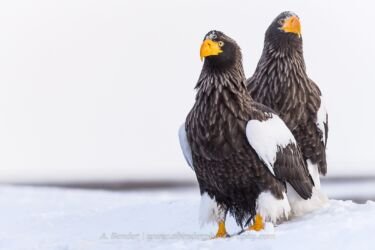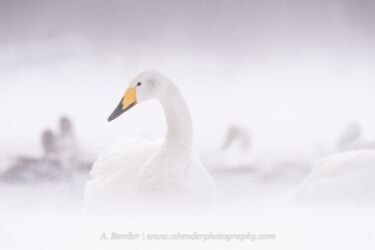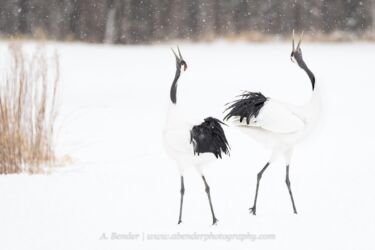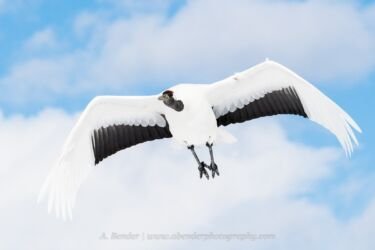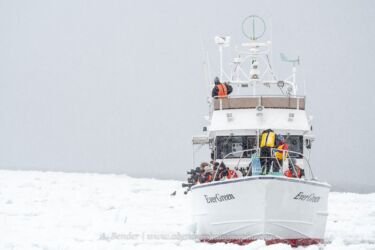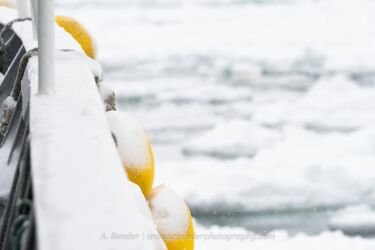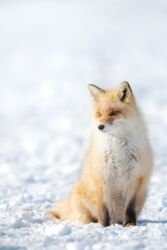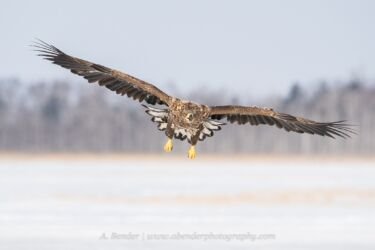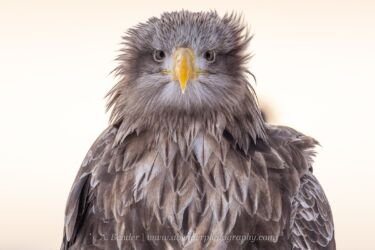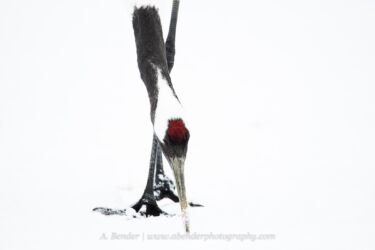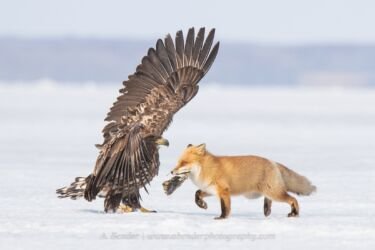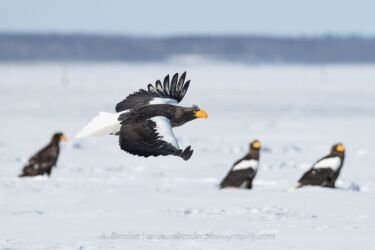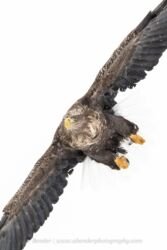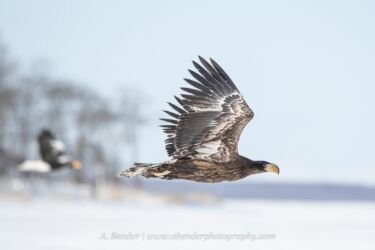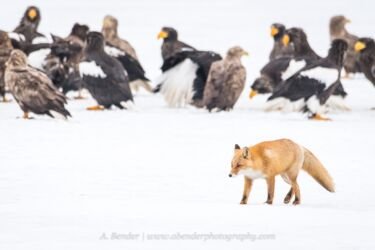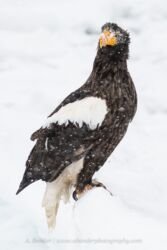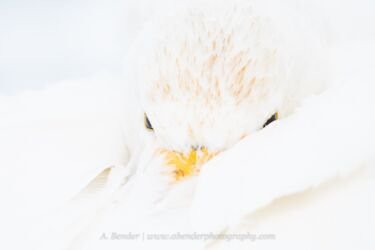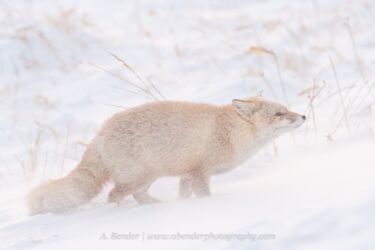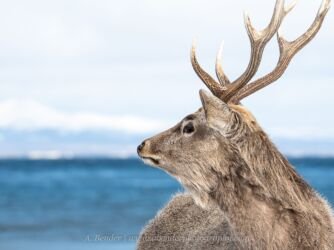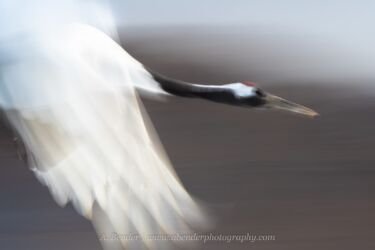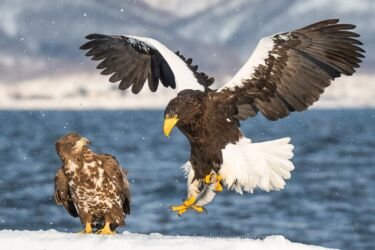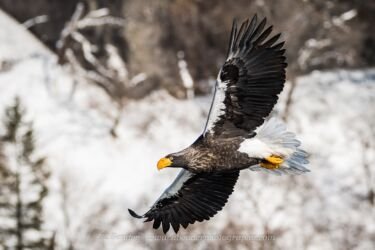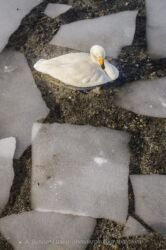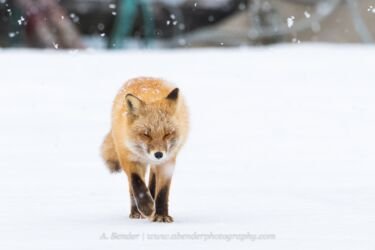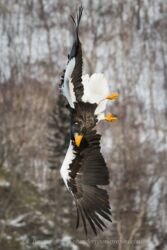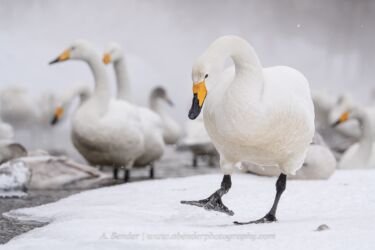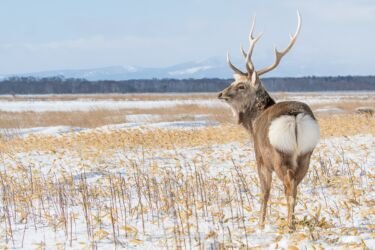JAPAN: Hokkaido: Birds & Wildlife

TOUR FOCUS
PHOTOGRAPHY
SCHEDULED TOURS
TRIP LEADERS
TOUR COST
From: $6,350 (See details)
Cost is per person, double occupancy from Tokyo, Japan (HND)
GROUP SIZE
3-4 Participants
AVAILABILITY
2026: 4 Spaces available
PRIVATE TOUR OPTION
This tour is available as a private trip for any size group. The tour cost will vary with the number of people and any custom requests.
TESTIMONIALS
Highlights of JAPAN: Hokkaido: Birds & Wildlife
Description of JAPAN: Hokkaido: Birds & Wildlife
Hokkaido, Japan – a magical place filled with stunning wildlife. The most northern island in Japan, Hokkaido holds some of the largest areas of wild lands left in Japan. The sparsely populated Eastern region hosts a wide variety of wildlife. Some, like the Steller’s Sea Eagle migrate to the area to overwinter while others, such as the Red Crowned Crane are year-long residents. Set against a landscape draped in snow, these creatures allow us to observe them as they go about their daily rituals in this frozen wonderland. Some behaviors we will see include the Red Crowned Crane mating display, Steller’s Sea Eagles fishing, and red foxes patrolling for their next meal. Join me as we explore these frozen wilds in Eastern Hokkaido and all they have to offer.
Species commonly found: Red Crowned Crane (Grus japonensis), Whooper Swans (Cygnus cygnus), Steller’s Sea Eagles (Haliaeetus pelagicus), White-tailed Eagles (Haliaeetus albicilla), Ezo Red Fox (Vulpes vulpes schrencki), Yezo Sika Deer (Cervus nippon yesoensis).
Length of Tour
10-days/9-nights
Brief Itinerary
Day 1 Arrive in Tokyo/Haneda International
Day 2 Fly to Hokkaido – Kushiro
Day 3/4 Kushiro – Red Crowned Cranes
Day 5 Kushiro to Lake Kussharo – Whooper Swans
Day 6 Lake Kussharo to Rausu – Whooper Swans
Day 7 Rausu – Sea Eagles
Day 8 Rausu to Nemuro – Sea Eagles
Day 9/10 Nemuro – Sea Eagles, Swans, Cranes
Day 11 Kushiro – Red Crowned Cranes
Day 12 Fly to Tokyo, Flights Home
Detailed Itinerary
Day 1 Arrive in Tokyo/Haneda International
Try to plan a flight that arrives at Haneda International before 4pm local time. This allows plenty of time to get processed through customs/immigration and have transport to the hotel while still being able to have dinner at a reasonable hour. At dinner we will discuss what to expect, photography strategies, logistics, and winter wildlife photography protocol as well as some basic Japanese cultural customs.
Day 2 Fly to Hokkaido – Kushiro
In the morning we make our way back to the airport to catch a domestic flight up to Kushiro on the island of Hokkaido, Japan’s northern most island and prefecture. Upon arriving we will get our first sight of the endangered red-crowned cranes as we visit the Akan International Crane Center. After the visit we will head into Kushiro to get checked in and settle down for the evening.
Day 3/4 Kushiro – Red Crowned Cranes
Up early we make the drive out into the rural countryside to photograph the red crowned cranes from several locations throughout the morning. Taking a break for lunch, we continue to focus on the cranes in the afternoon and evening these days.
Day 5 Kushiro to Lake Kussharo – Red Crowned Cranes and Whooper Swans
We pack out early, making a final stop in the morning to photograph the red crowned cranes before heading deeper into the interior of the island and up into the volcanic mountains to Lake Kussharo. This is the largest caldera lake in Japan and there is geothermal activity still to this day as evidenced by warm sandy spots and the hot spring outflows along the shore. Here several hundred whooper swans gather during the winter and we will take this time to photograph them in the evening this day.
Day 6 Lake Kussharo to Rausu – Whooper Swans
We will take this morning to again photograph the swans along the lake while keeping an eye out for long-tailed tits and wood nuthatches. After a morning of shooting we will collect our belongings and make the trek off the mountain and towards the northeastern coastline to the small fishing village of Rausu. Located on the UNESCO Natural Heritage site and on the boarder of the Shiretoko National Park, Rausu is a hub of natural wonders.
Day 7 Rausu – Sea Eagles
Depending on the weather conditions, we will either be up very early or just early to catch out boat out onto the Nemuro Strait where we will be able to photograph the vulnerable Steller’s sea eagles and White-tailed sea eagles amongst the drift ice. Out for several hours, we will return to warm up at the hotel. Early afternoon we will head out to explore further looking for the endemic species of fox – the Ezo red fox. Sika deer, short eared owls, and more eagles can potentially be seen as well.
Day 8 Rausu to Nemuro – Sea Eagles
Depending on the weather conditions, we will either be up very early or just early to catch out boat out onto the Nemuro Strait where we will be able to photograph the vulnerable Steller’s sea eagles and White-tailed sea eagles amongst the drift ice. Out for several hours, we will depart Rausu for Nemuro, another port city further south. On the way we stop to look for more wildlife along the coast in several places.
Day 9/10 Nemuro – Sea Eagles, Swans, Cranes, Foxes, Deer
Each morning we will gather and head out to the frozen lakes to watch eagles (and maybe fox) come to scavenge the leavings of ice fishermen. Beyond that we will continue to search for fox, swans, owls, and deer.
Day 11 Kushiro – Red Crowned Cranes
We pack up and head to Kushiro for one last night in Hokkaido, having made a complete circuit of this rural and beautiful land. We will have the option to either stay in Kushiro and explore the town or we can photograph the cranes one final time.
Day 12 Fly to Tokyo, end of main tour
We board domestic flights back to Tokyo/Haneda International. You will want late return flights to account for any weather delays between Hokkaido and Tokyo.
Cost
Cost is $6,350 per person, based upon double occupancy, from Tokyo, Japan (Airport code HND.
This trip ends in same as arrival city (Airport code ).
The price includes the following:
*all accommodations per double occupancy (single supplement is available)
*all meals from dinner on the first day until breakfast on the last day
*the internal flight from Tokyo to Hokkaido
*Rental car and transportation within country
*Boat Fees for Eagle Photography
*Entrance fees to Akan International Crane Center
Single Supplement
If a single hotel room is preferred, or we are unable to find a suitable roommate for you, a single supplement fee of $800 will be assessed.
NOTE: For boat-based tours, see pricing options for single cabins. Single cabin cost includes the single hotel cost above.
Minimum Number
If fewer than the minimum number of required participants are registered, we may still be able to run the trip by adding a small-group supplement fee, per person, determined by the number of participants registered.
Deposit Requirements
A $1,500 deposit per person is required to hold each space on this tour. Deposit may be made online by clicking the "Book Your Trip Now" button and using any credit card. If you prefer, you may call us at 888-875-9453 to pay by phone. You may also mail us a check, however, remember that all space is held on a first come-first served basis as deposits are received.
How to Book
In order to hold your space, click the "Book Your Trip Now" button above and complete the deposit process, including payment of the deposit through our Paypal portal using ANY CREDIT CARD. Upon completion of deposit, please visit our secure, online CLIENT INFORMATION FORM to complete your registration.
Final Payment
For all land-based tours: full payment by check is due 120 days prior to the departure date.
For all boat-based adventure cruises of 7-days or longer: full payment by check is required 180 days prior to departure.
NOTE: If you prefer to use credit card for final payment, a 3% fee may be added to cover the credit card merchant fees we incur.
This trip includes standard hotel rooms.
Activity Level Rating: 1 (Note: 1 is easy and 5 is difficult)
(Hokkaido) Intermediate – no long walks but exposure to freezing temperatures for extended periods of time, footing will be snow and ice with slipping hazards, and standing on the deck of a boat in motion.
(Tokyo) Easy but requires lots of urban walking each day (est 6+ miles over the course of a day).
Since this tour focuses on the wildlife specifically, telephoto lenses are going to be key to achieving the best images that require little cropping. Feel free to bring wider lenses but understand the majority of images created will most likely be between 300-600mm. Here are my suggestions:
- Your longest telephoto for wildlife and birds – I use the Tamron 150-600mm G2 and highly recommend it if you are looking for a lens in this range. Anything 500mm or longer is going to be great for photographing the various wildlife, from cranes to fox.
- A shorter telephoto such as a 70-300mm or 100-400mm for wider environmental shots and intimate portraits when we are with the snow monkeys – I typically carry the Tamron 18-400mm or Tamron 100-400mm for covering this range.
- A lightweight wide to midrange variable lens (24-70, 18-400, 16-300, 18-70) would be great to have for when we come across landscape or street scene photo opportunities.
- A Macro lens – such as the Tamron 90mm Macro – can be helpful when we are photographing the urban birds as this lens will give you the ability to also capture the delicate beauty of the plum blossoms up close.
- Tripod/monopod for extra support of long lenses and for when we are waiting for action and want to put our hands in our pockets for warmth.
- Microfiber towels/lens cloths for cleaning lenses – with snow prevalent you want something to wipe lenses off if we end up shooting into the wind or in a heavy snowfall.
- Gear and trip insurance – because you never know what might happen. Working out in the elements, I always highly suggest having gear insurance as, should the worst come to pass, you want to know that at least you can replace what’s been damaged when you return home.
Purchasing Flights
Do not purchase your flights until the trip has been confirmed to go.
Detailed Trip Information
Upon notification that final payment is due (120 days prior to departure for land based tours / 180 days for boat based tours), you will receive a trip package of detailed information for your tour.
Any additional information about the trip, including lodgings, contacts, participants, meeting locations, etc., will sent about 2 weeks prior to the trip departure, or after final payment is received for late registrants.
Travel Insurance
As with all tours, we recommend purchasing Travel Insurance to help cover your investment, for covered reasons. Please see our section on Travel Insurance.
Passport & Visa
US Citizens may require a visa to enter certain foreign countries. See above for any required visa information.
Participants arriving to the USA from a foreign country may need to get a travel visa to enter the United States. Be sure to check the requirements for your country of origin.
Itinerary Changes
The trip itinerary is developed many months ahead of time. Occasionally, despite our best planning, changes may occur during the trip, or we may be forced to alter our plans. Changes may occur because of weather, road conditions, safety concerns or other circumstances. In these situations, it is the leader(s) responsibility to carefully consider and implement appropriate alternatives. Any additional costs incurred because of changes will be the responsibility of each individual participant. Refunds will not be issued as a result of itinerary changes.

